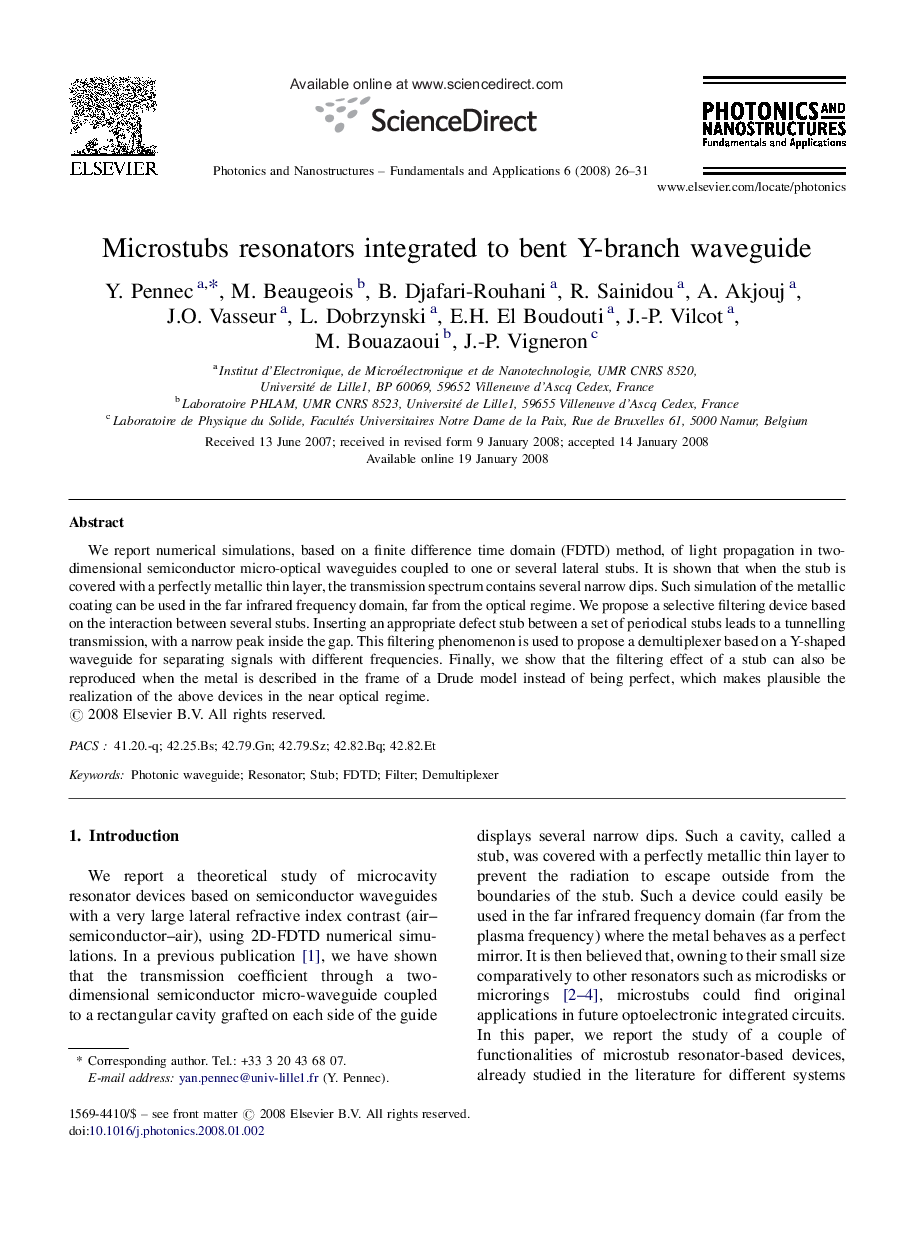| Article ID | Journal | Published Year | Pages | File Type |
|---|---|---|---|---|
| 1543079 | Photonics and Nanostructures - Fundamentals and Applications | 2008 | 6 Pages |
We report numerical simulations, based on a finite difference time domain (FDTD) method, of light propagation in two-dimensional semiconductor micro-optical waveguides coupled to one or several lateral stubs. It is shown that when the stub is covered with a perfectly metallic thin layer, the transmission spectrum contains several narrow dips. Such simulation of the metallic coating can be used in the far infrared frequency domain, far from the optical regime. We propose a selective filtering device based on the interaction between several stubs. Inserting an appropriate defect stub between a set of periodical stubs leads to a tunnelling transmission, with a narrow peak inside the gap. This filtering phenomenon is used to propose a demultiplexer based on a Y-shaped waveguide for separating signals with different frequencies. Finally, we show that the filtering effect of a stub can also be reproduced when the metal is described in the frame of a Drude model instead of being perfect, which makes plausible the realization of the above devices in the near optical regime.
